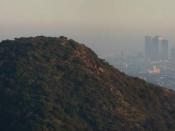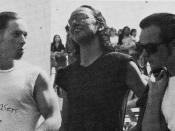Art through different mediums has always helped to bring awareness and positive messages to the public. In the Chicano movement, many artists (who also helped to found the movement itself) came to the forefront of Chicano history by creating masterpieces and sharing political ideals, but were largely neglected by the mainstream consciousness. Activists like Cesar Chavez, who fought for labor rights, were also public figures fighting for equality. "Art, music, literature, theater, and other forms of expression have flourished. Spanish-language and bilingual media, including television and radio stations, newspapers, magazines, and motion pictures, have expanded in number and impact" (Mendoza 2001). Yet, in present-day society, the struggle for "crossover art" and mainstream success is still present, and Chicano people are still working towards equality. Who and how are the artists and activists representing today's Chicano movement in art, music, literature, and onscreen?
The Chicano movement began in the 1960s and fought for civil rights, and to repair social injustice.
One of the most widely represented aspects of political art at the time was murals that embodied Chicano cultural identity and civil rights. In Los Angeles in 1988 with the help of "mural art pioneer" Judith Baca, the Neighborhood Pride Program was created. From 1998 until 2002 105 murals were commissioned and painted in Los Angeles, artists received "189,000 for 15 murals from the city, but later stopped financing the program (in 2002)" (Kelleher 2002). But, funding has still been provided to focus on "conserving and restoring existing murals". But the Chicano movement has also spread to other paint mediums, such as in contemporary art. Recent painters, such as Vincent Valdez, promote awareness of hate crimes and police brutality. One of the best examples of this type of work is his painting "Kill the Pachuco Bastard!" (2001), which violently depicts...


